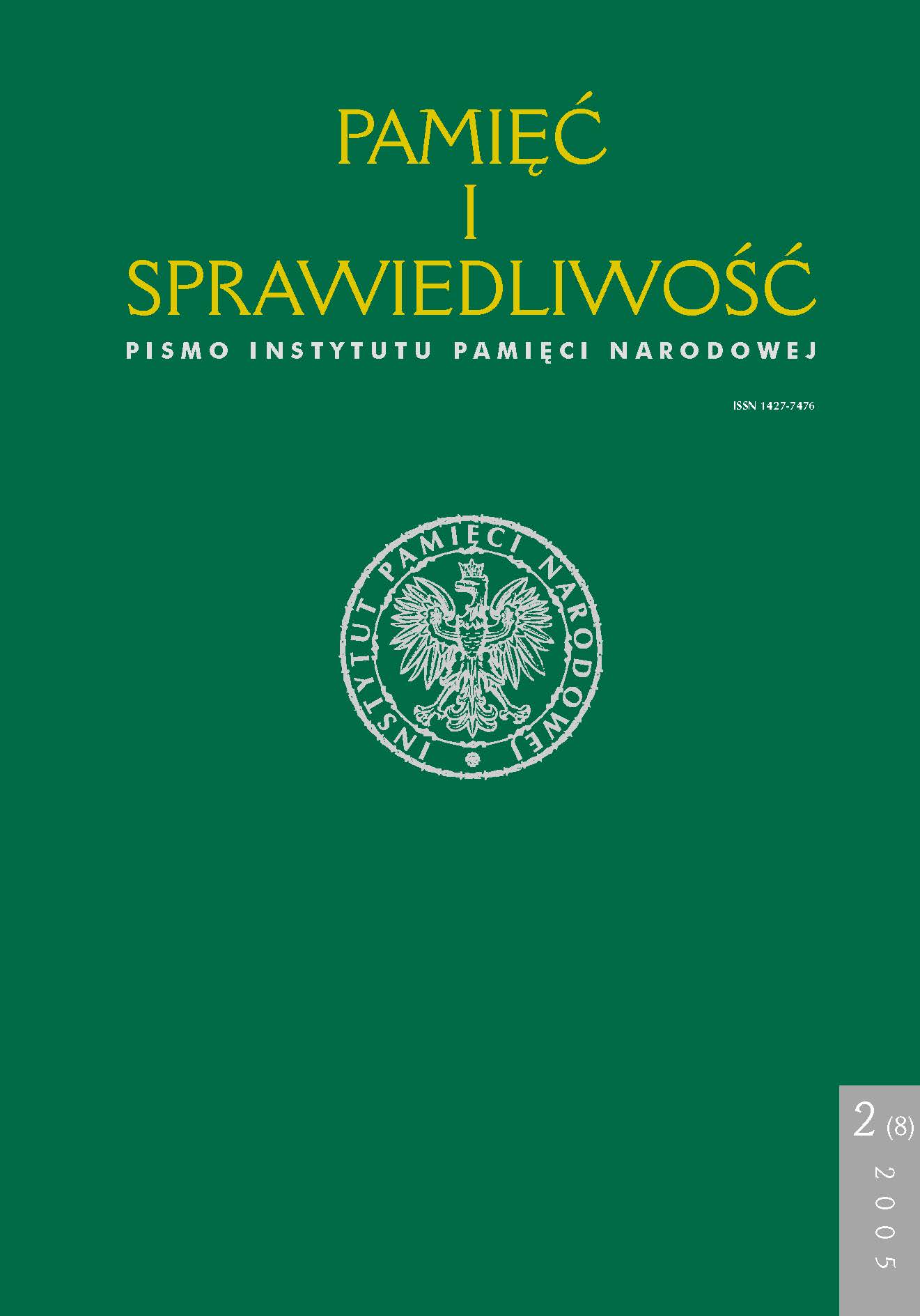Odkrycie masowych grobów w Katyniu oraz problematyka polska w prasie Protektoratu Czech i Moraw w okresie od kwietnia do czerwca 1943 roku
Pamięć i Sprawiedliwość, Том 8 № 2 (2005), pages: 237-255
Publication date: 2005-12-30
Аннотация
After the Protectorate of Bohemia and Moravia was established, official press was directly subordinated to the Office of the Reich Protector, the head of which for a long time was Wolfgang Wolfram von Wolmar. During weekly briefings editors-in chief were told what information ought to be published and what kind of a comment on current political events was required.
The author has studied all the Prague newspapers and some of the magazines which came out from mid-April till the end of June 1943. The Protectorate press mostly published official German documents, among which there was also information about the discovery of mass graves in Katyn, provided by the DNB on the 14th of April 1943. The report prepared by the pathologists and criminologists who worked there appeared in the beginning of May. The readers could read the testimony of a Polish writer Emil Skiwski and, above all, testimonies of two witnesses from the Protectorate, a pathologist Frantisek Hajek and an eminent writer Frantisek Kozik.
Hajek as a member of the international group of physicians participated in the autopsy, Kozik visited Katyn together with other European writers. Their testimonies were published and, on the 30th of April, Kozik gave a speech on the radio.
The press was occupied mainly with commentating on the relationship between the Polish emigrants in London and the Soviet government, who exploited the Katyn issue to put the London emigrants in the shade and rolled out the Moscow emigrants under Wanda Wasilewska’s leadership. The most involved commentator was Karel Werner, the redactor-in-chief of the “Poledni list” magazine and later the “Vecerni Ceske Slovo” daily paper.
The editorial articles and commentaries differentiate as the employed figures of speech are considered. Journalists who worked in reputable newspapers, while reporting on the felony,
did not use expressions like “an animal excess of the gangsters,” “Jewish torturers” or “the beast of Bolshevism.” Those phrases were employed by journalists who had worked as editorial staff for the tabloid press before 1938. The anti-Semitic articles were written mostly by editors who had previously worked for the “Vlajka” magazine – Pachmayer, Sourek and a keynoter, anti-Semite Rudolf Novak.
Frequently given opinion (27 times) was that Bolshevism had not changed since 1917 and was still the same. Not so rare (21 times) were presumptions that Great Britain would betray the Poles because it is far more important for her to maintain the alliance with Moscow. A warning that Katyn is a lesson of what would happen to the Czechs under the Bolshevik rule was mentioned 17 times. And finally, it was stated 14 times that the German army on the Eastern front protected Europe from spreading of Bolshevism.
Наиболее читаемые статьи этого автора (авторов)
- Martin Lacko, Tomasz Grabiński, Armia słowacka we wschodniej Polsce w 1941 roku , Pamięć i Sprawiedliwość: Том 3 № 1 (2003)
- Martin Lacko, Tomasz Grabiński, Masakra katyńska a Słowacja. Obraz tragedii w prasie słowackiej wiosną 1943 roku , Pamięć i Sprawiedliwość: Том 8 № 2 (2005)
- Petr Blažek, Tomasz Grabiński, Akcja „Červotoč” (Kołatek) Tajny współpracownik StB Stanislav Dvořák jako kurier „Solidarności Polsko-Czechosłowackiej” , Pamięć i Sprawiedliwość: Том 9 № 1 (2006)
 Język Polski
Język Polski
 English
English
 Deutsch
Deutsch
 Français (France)
Français (France)
 Italiano
Italiano
 Русский
Русский


 PDF (Język Polski)
PDF (Język Polski)
